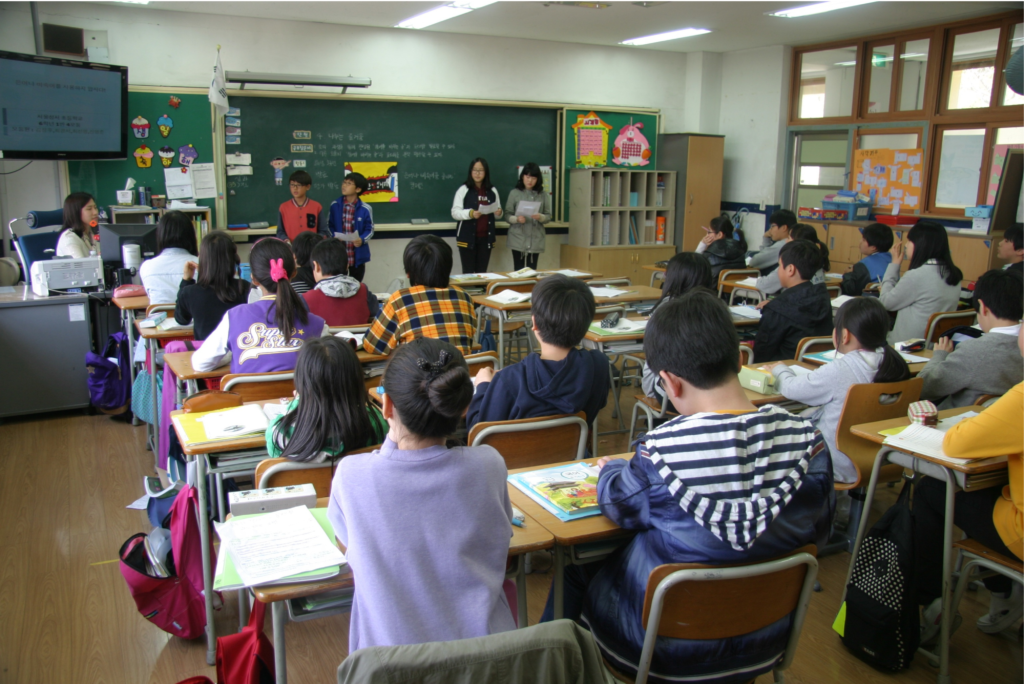Education System and the Need to Change
As a student, I have encountered classmates who were struggling in the education system.
It was difficult to watch friends and peers struggle and not know how to help.
Undoubtedly, this article aims to provide some insight into common reasons why students struggle at school and offer strategies for supporting them.
Whether you are a student, teacher, or parent, the information in this article can help you understand how to better support and encourage students who are struggling at school.

Besides, by providing the right tools and resources, you can help students overcome challenges and succeed in their education.
The education system in most countries consists of a hierarchy of schools that children attend as they progress through different stages of their education.
In general, the education system is designed to provide children with the
knowledge,
skills, and
values that they need to become productive members of society.
Further, in many countries, the education system is divided into three main levels:
Primary Education,
Secondary Education, and
Higher Education.
The specific structure and content of the education system can vary significantly from one country to another, and may also vary within a single country depending on factors such as
the region,
the type of school, and
the level of education.
In some countries, education is compulsory up to a certain age, while in others it is optional.
In some nations, the government controls all elements of education, while others have a decentralized system with greater local authority.
Basically, traditional education, with its focus on memorization and test-taking, may not help students acquire well-rounded skills and knowledge.
In the meantime, many educators and parents have expressed concerns that the current system does not always adequately prepare students for the challenges and opportunities of the modern world.
See How I Can Massively Change Your English Speaking Skills!
Are you looking to improve your English speaking skills? Look no further! Our English speaking course is designed to help you communicate effectively and confidently in a variety of settings. I will guide you through interactive lessons and activities that will help you improve your pronunciation, vocabulary, and overall fluency.
Whether you are a beginner or have some experience with the language, our course is tailored to meet your specific needs and goals. Sign up today and take the first step towards speaking English like a pro!

For the same reason, there has been a growing movement in recent years towards more personalized, project-based, and experiential approaches to education, which aim to engage students more actively in the learning process and help them to develop
critical thinking,
problem-solving, and
creativity.
These approaches often involve a greater emphasis on hands-on learning, collaboration, and real-world application of knowledge.
While there is no one-size-fits-all solution to improving the education system, it is important to continue to explore and invest in innovative approaches that better serve the needs and interests of children.
This can include a variety of strategies, such as incorporating more experiential learning opportunities, providing more individualized instruction, and using technology and other resources to support learning in meaningful ways.
But this structure isn’t helping the children.
While kids are spending an average of 7 hours of their most productive time at school, most of the children are not being holistically groomed.
It’s understandable and I do not expect a school to produce students who become world-renowned athletes or musicians, or highly successful business leaders like
Sergey Bubka,
Enrique Iglesias, or
Sundar Pichai
These individuals have achieved remarkable success in their respective fields and have worked hard to get where they are.
However, it is important to recognize that every person has their own unique strengths and abilities, and a school’s primary focus should be on helping students develop the skills and knowledge they need to succeed in their chosen paths, whatever they may be.

In particular, by focusing on providing a well-rounded education and supporting students in their individual goals and interests, schools can help students develop the skills and confidence they need to succeed in whatever they choose to do.
What are the top 5 areas schools should focus on developing in children?
There is no one-size-fits-all answer to this question.
As the specific skills and abilities that are most important for a child to develop will depend on their individual interests and goals.
Moreover, the needs of their community and the demands of the wider world.
However, there are some general areas that could be considered essential for children to explore and develop, regardless of their specific path in life.
These might include:
Communication and social skills:
Being able to effectively communicate with others and work as part of a team is crucial for success in many areas of life.
For learning American accent you can check our website. It has hundreds of free and paid self learning tutorials.
Schools can help students develop speaking skills by providing opportunities for collaboration and teamwork, as well as instruction in effective communication techniques.
Critical thinking and problem-solving:
The ability to analyze and synthesize information, and to come up with creative solutions to challenges, is important for success in many fields.
Altogether, schools can help students develop these skills through activities that involve analyzing and interpreting data, working on open-ended projects, and engaging in debate and discussion.
Creativity and innovation:
The ability to think creatively and generate new ideas is valuable in many professions, and can also be a source of personal fulfilment.
Schools can encourage creativity by providing opportunities for students to explore and express themselves through art, music, and other creative pursuits.

Physical health and wellness:
Physical activity and good nutrition are important for overall health and well-being, and can also contribute to academic success.
Schools can help students develop healthy habits by providing opportunities for physical activity and promoting healthy eating habits.
Emotional Intelligence:
Being able to manage one’s own emotions and navigate interpersonal relationships is important for success in both personal and professional life.
Schools can help students develop these skills through activities that promote self-awareness, self-regulation, and empathy, such as
mindfulness practices,
social and emotional learning programs, and
counselling services.
But what if your child’s school does not share this thought?
If your school does not place a strong emphasis on the skills and abilities that I listed above, it might be helpful to advocate for more resources and opportunities to be devoted to these areas.
Here are a few strategies you might consider:
Gather evidence:
Look for research and examples of successful programs or initiatives that focus on the skills and abilities that you feel are important.
This can help you make a strong case for why your school should put more emphasis on these areas.
Engage with your school community:
Talk to other students, teachers, and parents about your ideas and see if they would be supportive.
You could also seek out opportunities to present your ideas to school administrators or school board members.
Find allies:
Look for teachers or staff members who might be sympathetic to your ideas and willing to work with you to advocate for change.
They might be able to provide valuable insights and support as you work to make your case.
Seek outside resources:
If your school is not receptive to your ideas, you might consider seeking out resources or opportunities outside of school to further develop the skills and abilities that you feel are important.
This could include participating in extracurricular programs, volunteering, or finding other educational or enrichment opportunities in your community.
Is the world now paying attention to this demand? Probably, and in certain nations where there are more English speakers, this is what I have found.
There have been various changes made to the education systems in
India,
Canada,
The United States,
The United Kingdom,
Australia
and other countries over the years.
Some of the major changes include:
Education system in India:

Introduction of the Right to Education Act (2009):
This act made education a fundamental right for children between the ages of 6 and 14, and mandated that all schools must provide free and compulsory education to these children.
Introduction of the National Education Policy (NEP) 2020:
The NEP 2020 aims to reform the education system in India by introducing a new multidisciplinary and flexible curriculum, increasing the use of technology in education, and promoting vocational training and skills development.
Introduction of Online and Distant Learning in India:
The COVID-19 pandemic has led to the widespread adoption of online and distance learning in India, as a means of continuing education while schools were closed.
Introduction of grading system:
In an effort to reduce the emphasis on exams and rote learning, the Indian government has introduced a grading system for schools, which allows for a more holistic assessment of students based on a range of factors such as
class participation,
projects, and
extracurricular activities.
Introduction of vocational training:
The government has also introduced vocational training programs at schools, which aim to provide students with practical skills and knowledge that they can use in a specific industry or trade.
Education system in Canada:

Introduction of the First Nations, Inuit, and Métis Education Policy Framework (2017):
This policy aims to improve the education outcomes for Indigenous students in Canada.
Its also promoting culturally relevant and responsive teaching, and increasing the involvement of Indigenous communities in the education process.
Introduction of the Canadian Charter of Rights and Freedoms (1982):
This charter guarantees the right to education for all children in Canada.
It also requires that the government provide free, compulsory education to children between the ages of 6 and 16.
Introduction of Online and Distant Learning in Canada:
In Canada, internet and distant learning have become quite popular as a way to continue education when schools were closed as a result of the COVID-19 pandemic.
US Education system:

Introduction of the No Child Left Behind Act (2001):
This act aimed to improve the education system in the United States.
Mainly by increasing accountability for student performance, and providing resources for disadvantaged students.
Introduction of the Every Student Succeeds Act (2015):
This act replaces the No Child Left Behind Act.
Basically, this act aims to give states more flexibility in how they assess student performance and improve struggling schools.
Introduction of Online and Distant Learning in the US:
As a way to continue education when schools were closed due to the COVID-19 pandemic, internet and distant learning have become quite popular in the United States.
Education system in the UK:

Introduction of the Education Act (1988):
This act established the National Curriculum.
That outlines the core subjects and standards that all students in England and Wales are required to study.
Introduction of the Children Act (1989):
This act established the responsibility of local authorities to provide education and support to children with special educational needs.
Introduction of the Apprenticeships, Skills, Children and Learning Act (2009):
This act introduced the concept of “students at the heart of all we do” and aimed to increase the focus on personalization and choice in education.
Introduction of the Education and Adoption Act (2016):
This act aimed to improve the performance of underperforming schools in the United Kingdom.
Specifically, by granting the government the authority to transform them into autonomous, publicly sponsored academies.
Introduction of Online and Distant Learning in the United Kingdom:
As a way to keep learning while schools were closed because of the COVID-19 pandemic, many people in the United Kingdom used distant and online learning.
Education system in Australia:

Introduction of the Australian Curriculum, Assessment and Reporting Authority (ACARA) (2009):
This organization is responsible for developing and implementing the National Curriculum across all states and territories in Australia.
Introduction of the National Quality Framework (2012):
Basically, this framework sets out the standards for the care and education of children in early childhood education and care services in Australia.
Introduction of Online and Distant Learning in Australia:
Because of the COVID-19 pandemic, internet and distant learning have become quite popular in Australia as a way to continue education when the schools were closed.
Introduction of the National Aboriginal and Torres Strait Islander Education Action Plan (2015):
Basically, this plan aims to improve the education outcomes for Indigenous students in Australia by addressing cultural and linguistic barriers, and increasing the involvement of Indigenous communities in the education process.
In conclusion, the education system varies widely around the world.
Some countries have highly centralized and standardized systems, while others have more decentralized and diverse approaches.
However, the purpose of education is to provide students the information, skills, and values they need to succeed in life.
In general, to achieve this, schools, teachers, parents, and communities can help ensure that all students have the opportunity to succeed and reach their full potential by working together.



